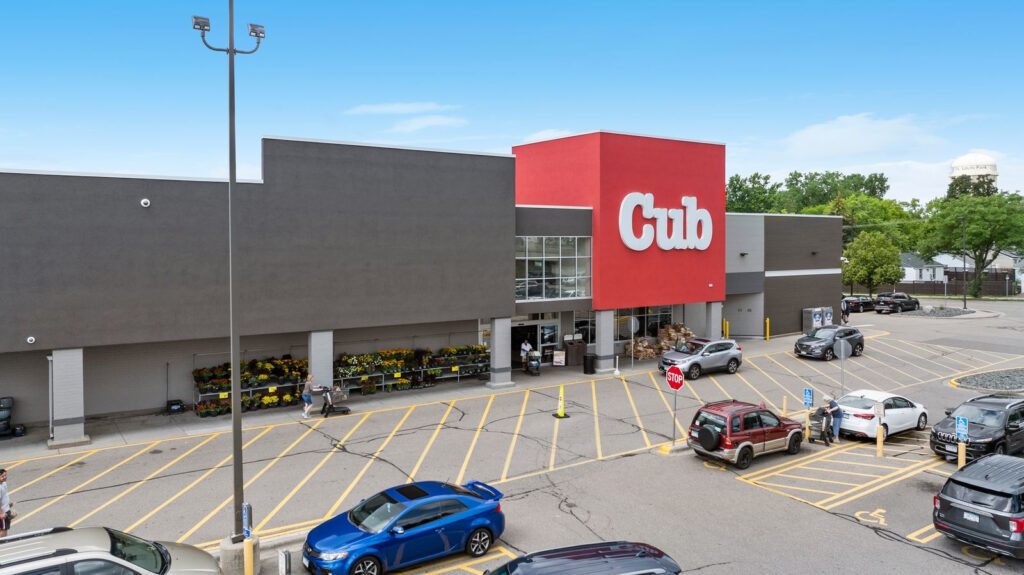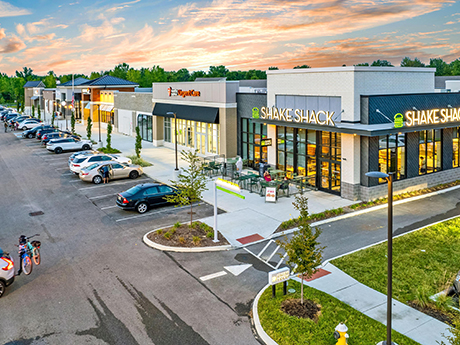All types of purchasers, from private capital to institutional groups, want to take advantage of the property sector’s strong fundamentals.
In JLL’s second-quarter “Retail Market Dynamics” report, “resilience” was the word used to describe the national retail investment landscape in the first half of 2025.
Transaction volume reached $28.5 billion, a 23 percent increase over the same period a year ago. The figure also outpaces the long-term historical average of $27.7 billion for the first two quarters of the year, according to the brokerage firm. The scope of data includes all transactions $5 million and above for all retail asset subtypes.
Retail investment sales brokers in the Midwest say there is plenty of capital flowing into the sector and more robust competition from institutional investors as of late.
“We are seeing enhanced liquidity in the retail investment sales market from both an equity and debt perspective,” says Michael Neider, senior director with JLL Capital Markets in Chicago. “Total transaction volume is up in terms of deal volume and number of transactions, while cap rates are compressing.”
Grocery-anchored and unanchored retail assets remain the most efficiently priced, but power center cap rates are compressing at a faster pace from their elevated levels, says Neider.
“The spread between grocery-anchored cap rates and power center cap rates has narrowed from 166 basis points in 2023 — near an all-time high — to around 80 basis points today.”
Brett Berlin, senior vice president with Chicago-based Quantum Real Estate Advisors Inc., says there has been significantly more demand from buyers over the last 12 to 18 months.
“Buyers understand there really isn’t a lot of distress in retail real estate,” he says. “In the last six months, our firm has seen a significant uptick in sales activity. Sellers have accepted the current interest rate environment as the ‘new norm’ and are more accepting of their updated valuations.”
At its September meeting, the Federal Reserve implemented a quarter-point cut to the benchmark rate, citing a slowing labor market. It marked the first rate cut of the year. The federal funds target range now stands at 4 to 4.25 percent.
Meanwhile, the narrowing of the bid-ask spread has prompted more deals to close.
“The bid-ask gap between buyers and sellers was widest in 2022-2023 on the heels of the dramatic runup in interest rates,” says Scott Wiles, senior managing director of investments with Marcus & Millichap’s Cleveland office. “But over the course of 2024 and even more so today in 2025, the bid-ask gap has narrowed due to a combination of (1) sellers ‘making peace’ that today’s cap rates are in fact reflective of market conditions, and (2) interest rates ever so slightly receding, giving the buyer pool the ability to stretch upward on price a bit due to their increasingly cheaper cost of debt.”
But with more capital in the marketplace comes more competition. Some investors now cite a lack of product available for purchase, according to Neider. “The challenge to transaction volume in today’s market is more of a function of owner motivation versus pricing,” he says.
Who’s Buying?
The Midwest region has experienced enhanced institutional and REIT activity compared with years past, according to Neider, who says that public REITs have closed $460 million in Midwest acquisitions year to date. There’s been an uptick in activity in secondary markets in the Midwest due to more robust competition from institutional investors in other markets for institutional-quality assets.
“Institutional investors cite portfolio diversification, relatively low climate/natural disaster risk and attractive going-in yields as reasons for investing in the Midwest,” says Neider.

Quantum Real Estate Advisors Inc. recently arranged the sale of Eola Crossing, a 14,238-square-foot retail center in Aurora, Illinois, that sold to an all-cash, private buyer for $2.8 million at a cap rate of 7.25 percent.
Christian Williams, executive vice president with CBRE in Oak Brook, Illinois, echoes this sentiment, emphasizing that retail fundamentals remain strong. “We’ve seen more institutional capital active in the space in the past year or two than we were seeing for the years prior to COVID.”
Despite the activity from the institutional pool of investors, the market for retail investments is still dominated by private capital investors, says Wiles. Examples include family offices, high-net-worth investors, investment syndicates and private equity funds.
“The private capital segment tends to be more fluid in its investment criteria and greatly outnumbers the pool of the institutional segment of the market,” says Wiles.
In the Midwest, private capital accounted for about 70 percent of all transaction volume through the first half of 2025, according to Neider. This figure marks the highest share of private buyers across any region in the U.S. Institutional buyers accounted for about 17 percent, followed by REITs at 13 percent.
In May, JLL brokered the sale of Westgate Shopping Center in Fairview Park, Ohio. Phillips Edison & Co., a publicly traded REIT, purchased the property from The R.H. Johnson Co. for $51.5 million, representing a 7.65 percent going-in cap rate.
“Due to enhanced capital flows into the retail sector, investors are currently looking for larger deal sizes of $50 million or more to get equity out efficiently,” says Neider.
Another large shopping center transaction that recently closed was Shoppes at Knollwood in the Minneapolis suburb of St. Louis Park. Williams represented the seller, Heitman, in the sale of the 451,700-square-foot property to KPR Centers, a New York City-based retail real estate development and investment group. Local media reports list the sales price at $85 million. Anchored by grocer Cub Foods, the asset was nearly 99 percent leased at the time of sale.
What Investors Seek
What do today’s retail investors seek? Sources say they are keen on value-add deals, but those are hard to come by in the current market. Williams says the reasoning is because retail leasing activity has been so strong. “Investors are getting creative with ways to create value, often through arbitrage by selling off pieces of a shopping center at lower cap rates,” he says.
“Value-add is extremely hard to find in the retail space today due to the low vacancy rate and limited supply pipeline,” echoes Neider. “The retail national vacancy rate is around 5 percent, near all-time low levels.”
Ember Grummons, an investment sales broker with Omaha-based Investors Realty Inc., emphasizes that Class B properties currently provide an opportunity in the marketplace. He says these assets are experiencing increases in rental rates due to the lack of supply and high cost of new construction.
Grummons represented the seller of Twin Creek Shopping Center in Bellevue, Nebraska, for $13.6 million. The property consists of eight retail assets totaling 83,085 square feet that were all built in the late 1990s to early 2000s. Both the buyer and seller were limited liability companies.
“Due to the lack of new construction supply to the market, Class B and C property owners are finally seeing their investments come to life — rents are growing, they are experiencing higher occupancy levels and they are cash flowing,” says Berlin. “These owners, should they need to refinance, are able to afford the higher borrowing costs due to their increase in cash flows.”
There’s also strong demand from buyers for deals $5 million and below. Grummons says that individual investors are very active in this price range because many of them can pay cash.

Heitman sold the Shoppes at Knollwood in metro Minneapolis to KPR Centers.
Berlin echoes this sentiment regarding cash buyers. He recently brokered the sale of a 14,238-square-foot retail center in Aurora, Illinois, that sold to an all-cash, private buyer for $2.8 million at a cap rate of 7.25 percent. At the time of sale, the property was roughly 90 percent leased to tenants such as Subway, Dunkin’, Wing Snob and Smile Family Dental. Berlin says that he received more than 15 offers within the first two weeks of listing the property on the market.
Wiles says that retail properties with smaller tenants of less than 5,000 square feet generally command the most demand from the buyer pool as opposed to “boxier” assets that have one or more users occupying 20,000 square feet or more. He also notes that buyers are looking for opportunities where they can raise rents.
Wiles recently brokered the sale of Crocker Commons, a newly constructed strip center in the Cleveland suburb of Westlake, Ohio. The 28,612-square-foot property is home to tenants such as Shake Shack, Verizon and medical users.
“At a low 6 percent cap valuation and a price exceeding $600 per square foot, the sale of Crocker Commons demonstrates that core and top-performing strip center assets are trading at premium values even in secondary markets such as Cleveland,” says Wiles.
— Kristin Harlow
This article was originally published in the October 2025 issue of Shopping Center Business magazine.


